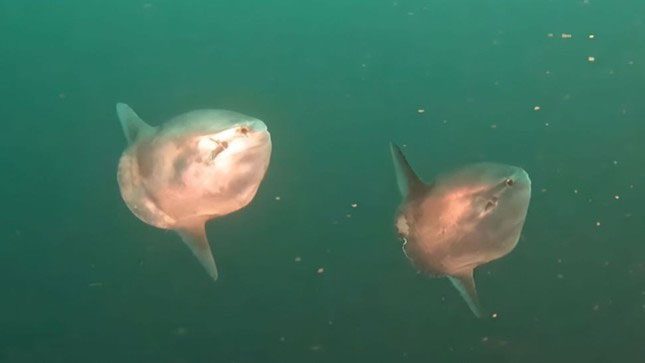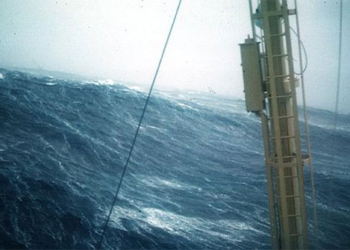A diver has captured a rare sight of two juvenile sunfish swimming in the emerald waters off the coast of British Columbia, Canada.
Experts estimate their width to be 60 cm, which is five times smaller than their size when fully grown.

The divers discovered the two juvenile sunfish swimming together off the coast of British Columbia. (Photo: Timothy Manuelides).
Experts identified the pair as ocean sunfish (Mola mola) and noted that their angular bellies and small size are indicators that they are still young.
Marianne Nyegaard, a marine biologist specializing in ocean sunfish and a research collaborator at the Auckland Museum in New Zealand, stated in a Facebook post: “To me, they are baby fish.”
The recent footage, taken by marine enthusiast Timothy Manuelides near Port Hardy in the Browning Pass area, shows the two shimmering sunfish accompanied by a school of widow rockfish (Sebastes entomelas) and yellowtail rockfish (S. flavidus). The sunfish swam away as Manuelides approached, waving their long dorsal and anal fins like wings through the sun-drenched blue water.
Researchers noted that the sunfish on the right had lost a part of its tail. They estimate that the juveniles have a diameter of about 60 cm. The sunfish is the largest bony fish in the world and can grow to a massive diameter of 3 meters, making these juveniles about five times smaller than adult sunfish—but over 240 times larger than their newborn size of just 2.5 millimeters.
Sunfish are also known as mola (which is both their genus and species name), derived from the Latin word meaning “millstone,” reflecting the round, flattened shape of their bodies.
The video reveals that sunfish can swim much faster than many people think, researchers noted in a Facebook post.
Jackie Hildering, a researcher and director of education and communications at the Marine Education and Research Society (MERS), wrote: “They are often thought to be sluggish due to the ‘sunbathing’ behavior observed at the ocean surface, where sunfish bask in warm light after spending time in frigid depths.” Hildering also noted: “They may also be willing to remove parasites from bird species like seagulls.”
Sunfish are found throughout the world’s oceans, from tropical to temperate seas, and spend most of their time between the surface and depths of 200 meters.





















































